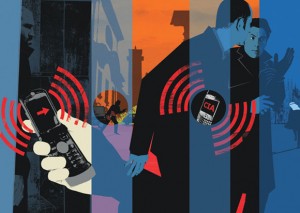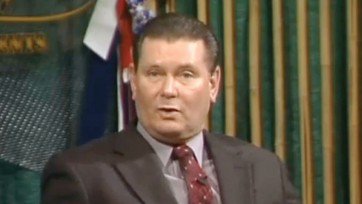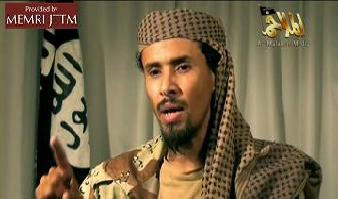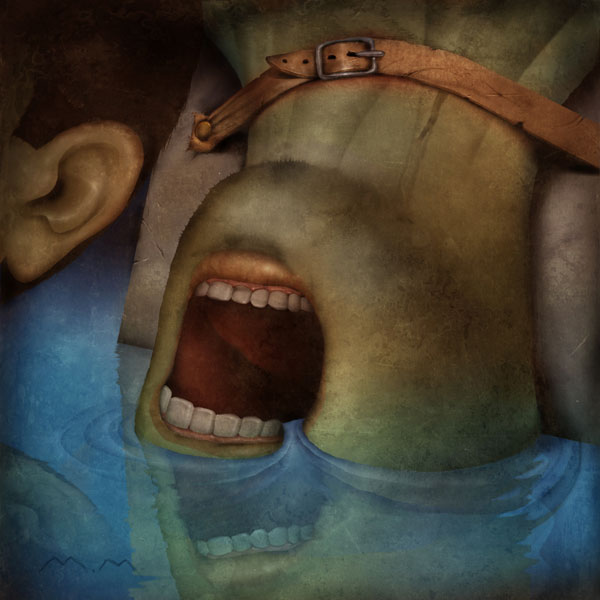Alex Constantine - June 20, 2012
By Alex Constantine
“Houses go ablaze, and souls weep endlessly, And behold all citizens are left in the phobia of timidity”. -- Okoronkwo Jonathan Jackson
A "Wink and a Nod" from the CIA
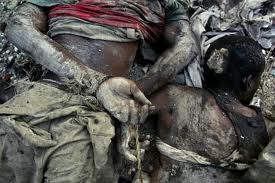 The knights templar of the corporations at the Central Intelligence Agency have a long history of striking alliances with political undesirables of all kinds, from the post-WW II recruitment of Nazis to secret liaisons with Middle Eastern terrorists. One example bridging both camps was the Agency’s tie to Black September, the Palestinian paramilitary group named after the "era of regrettable events” that began on September 16, 1970, when Jordan’s King Hussein declared military rule culminating in the deaths and expulsions of thousands of Palestinians in response to a PLO coup plot.
The knights templar of the corporations at the Central Intelligence Agency have a long history of striking alliances with political undesirables of all kinds, from the post-WW II recruitment of Nazis to secret liaisons with Middle Eastern terrorists. One example bridging both camps was the Agency’s tie to Black September, the Palestinian paramilitary group named after the "era of regrettable events” that began on September 16, 1970, when Jordan’s King Hussein declared military rule culminating in the deaths and expulsions of thousands of Palestinians in response to a PLO coup plot.
Black September kidnapped and murdered 11 Israeli athletes during the 1972 Summer Olympics in Munich. The PLO at that time was considered the most formidable terrorist threat to Israel, led by Yasser Arafat, who, the Washington Post reported on November 12, 2004, had a “wink-and-nod understanding with the CIA.”
For 30 years, Arafat “allowed his top intelligence officers to maintain regular contact with the agency – even as he publicly continued his defiant and ultimately fruitless quest for a Palestinian state.” The CIA’s relationship with Arafat began a year before the conflict in Jordan, when the Agency made contact with Ali Hassan Salameh, also known as Abu Hassan, a recruit in Arafat’s Fatah and Black September’s chief of operations.
In classified CIA cable traffic, Salameh was code-named “MJTRUST/2.”
The Post ’s David Ignatius reported that Robert Ames, a CIA case officer, made contact with Hassan with encouragement from Yassar Arafat, who sought an open channel with American intelligence. Ames continued to interact with Hassan in the spring of 1970, when they met in Kuwait. Ignatius:
"A senior CIA officer later that year tried to recruit Abu Hassan by offering him a large payment in Rome. The Palestinian angrily refused, insisting he was not an American agent. The botched recruitment was followed by years of bloody turmoil. King Hussein expelled PLO guerrillas from Jordan in September 1970; Arafat responded by creating a secret terrorist wing, known as Black September – with America’s former contact, Abu Hassan, as one of its key operatives."
A covert “understanding” was struck between the terrorist and the CIA, represented by Ames, at a meeting at the Waldorf-Astoria in November 1974. Arafat was there for a United Nations visit. The alliance was cemented during the 1975-76 civil war in Lebanon -- Arafat’s guerillas provided security for U.S. diplomats in West Beirut.
Was a simple “wink-and-nod” the extent of CIA complicity?
Facial gestures aside, a few years before this report, on September 16, 2001, Ignatius wrote:
“Even after Munich, the CIA worked to maintain its intelligence link to Salameh. Ames sent the Palestinian this message in September 1973, using a simple code for the CIA, the PLO and Israel: ‘My company is still interested in getting together with Ali's company. The southern company [Israel] has investigated. I've seen a lot of their files, and they know about our contacts.’”
The Black September leader wasn’t the only terrorist in the clan to act on hostility towards the Israelis. Hassan Salameh, Ali’s father, was a central figure in the Palestinian struggle – a loyal aide to Haj Amin al-Husseini, the Grand Mufti of Jerusalem (1921–1948), the well-known Nazi collaborator. Following the collapse of a pro-Nazi uprising in Iraq in 1941, Haj Amin and Hassan Salameh fled to Nazi Germany. Salameh took a German wife, was trained in paramilitary operations by Hitler’s Army. Salemeh returned to Palestine in October 1944 as a guerilla fighter embroiled in Operation ATLAS, a joint Nazi-Palestinian plot to poison the drinking water of Tel Aviv and kill the city’s 160,000 Jewish residents. The operation failed. Salameh was seriously wounded and fled to Jerusalem to have his injuries treated by a physician.
These ties survived the collapse of the Reich – Haj Amin’s granddaughter subsequently married Abu Hassan. And New York Times reporter Elliott A. Green describes an enduring postwar Nazi connection to the Grand Mufti and Hassan:
"One of the Nazis who met Haj Amin el-Husseini in the years of Nazi triumphs was one Franois Genoud … founder and militant of the pre-war Swiss Nazi party, the National Front. He met Husseini in 1936 in the Middle East and once again in Berlin in 1943, while he was an agent of the Abwehr (German intelligence agency) and while Husseini, the British-appointed Mufti of Jerusalem, was urging on the Holocaust and recruiting Arabs and other Muslims into the Nazi service. Genoud met him several times in Beirut after the war, until the Mufti died in 1974. Meanwhile, unrepentant, veteran Nazi Genoud got a management position with the Red Cross in Brussels, and later (1958) opened a bank in Geneva called the Banque Commerciale Arabe (backed by Syrian funds). Through his connections in Cairo, a postwar sanctuary for sundry Nazi war criminals, he met leaders of the Algerian FLN and was later invited to run a bank in newly independent Algeria, the Banque Populaire Arabe…. He counted among his friends Wadi Haddad and Ali Hassan Salameh, PLO master terrorists who accomplished airliner hijackings and other high-profile terrorist acts."
On January 5, 1997, the Philadelphia Inquirer published its own independent investigation of Genoud and reports that the CIA and State Department also gave a “wink-and-nod” to the Swiss banker and his closest Nazi/terrorist cronies:
"By 1955, Genoud had used his wartime contacts to become an adviser, researcher and banker to the cause of Arab nationalism. Along with Reichenberg in Tangiers and Cairo, Genoud set up AraboAfrika, an import-export company that served as a cover for the dissemination of anti-Jewish and anti-Israeli propaganda and the delivery of weapons to the Algerian National Liberation Front (FLN). Genoud made investments for Hjalmar Schacht, the former Nazi Reichsminister of Finance, president of the Reichsbank and a key postwar intermediary between Germans and Arabs. Numerous former Third Reich officials gained refuge in the Arab world, including Eichmann's deputy, Alois Brunner, who for years was protected by Hafez el-Assad in Damascus."
The CIA financed Brunner and his fellow Nazis in postwar Egypt. And in 1956, William Porter of the American embassy in Rabat briefed the State Department that Genoud, then living at Frankfort/Main in Germany, “purporting to represent the Hjalmar Schacht interests, called at the Embassy this week to discuss . . . massive investments" in Morocco:
"'The crux of the proposition made to the Moroccan Government by Mr. Genoud and his associates,' says the once-classified document obtained by the Inquirer under the Freedom of Information Act, 'involves the sale by the United States--through a long-term, low-interest loan--of 55 million dollars' worth of agricultural surpluses to the Schacht group, which would dispose of them in Western Europe and utilize the counterpart for investment in Morocco in the form of equipment and technicians.' Genoud said the Moroccans were keenly interested in securing Schacht's collaboration, according to the document, 'partly because of the esteem in which he is held in the Arab world generally, but also because the Moroccans tend 'to admire the philosophies for which he stands.' Porter reported that the embassy did not encourage Genoud, and did not think the Schacht plan would benefit the United States.
"More is to be learned about Genoud's contacts with the Americans. The State Department has yet to declassify 16 documents relating to Genoud; 29 other documents relating to his application for a visa or permit to enter the U.S. remain classified."
Financial Terrorism
Conservatives, always quick to point the finger elsewhere, have themselves engaged repeatedly in the systematic use of terror in many forms. Senator Joseph McCarthy, for examples, the BBC recalled in a 2005 review of the period, engaged in a “reign of terror.”
Another was financial. In the 1980s, S&Ls across the country were driven into insolvency. And, once again, the Central Intelligence Agency was situated at the heart of it. Many of the thrifts were systematically looted by the CIA and Mafia, as reported by Pizzo and Fricker, etal. in Inside Job, a book the corporate press did not consider newsworthy. In October 2008, Robert Sherrill, an exception based on hindsight, recalls:
“In Inside Job, Pizzo, Fricker and Muolo write that toward the end of their long investigation they began to pick up reports of C.I.A. involvement. Experts had wondered how so many billions of dollars could just vanish from the thrift industry without a trace. If some of that money were channeled into the Contra pipeline or used to serve other legal or illegal covert purposes, that could certainly be one answer.”
Deregulation of the S&L industry “created enough chaos to accommodate just about anyone's purposes. And taking out loans from federally insured institutions, giving the money to the Contras, and letting federal insurance pick up the losses does have the flavor of what Ollie North might think was a 'neat idea.'"
Sherrill conjectures that the reason CIA ties to the collapse of the S&Ls “have been treated so lightly is that the only attention they stirred in Congress was a ridiculously inept ‘investigation’ by a subcommittee headed by that unscrupulous boob Frank Annunzio … known to have had his hand out to the thrift lobby over the years.”
If the fall of the go-go thrifts in the ‘80s have taught us anything, it is that the CIA is busily engaged in corporate looting. Taken collectively, they serve as an example of an unknown number of targeted banking establishments and Wall Street firms.
Twenty years later, the implosion of Fannie Mae brought revived financial mass anxiety. The presence of ultra-conservative Nixon-aide/Marriott/Carlyle Group exec Fred Malek (a key advisor to Sarah Palin) on Fannie Mae’s auditing committee was a glaring red flag.
The fall of the mortgage giant was not the result of poor judgment or incompetence. The subprime mortgage crisis that rocked its foundations was as deliberate as any Hole-in-the-Wall Gang bank heist.
Ask Nye Lavalle, a wealthy Floridian who set out to expose rampant mortgage fraud before it turned endemic. The New York Times reported on February 4, 2012 that after losing the family home to foreclosure, “under what he thought were fishy circumstances, Mr. Lavalle, founder of a consulting firm called the Sports Marketing Group, began a new life as a mortgage sleuth. In 2003, when home prices were flying high, he compiled a dossier of improprieties on one of the giants of the business, Fannie Mae.”
Lavelle’s report reads like “a blueprint of today’s foreclosure crisis.” Years before the economic crisis peaked, Lavalle exposed loan-servicing firms in league with Fannie Mae
" ... routinely filed false foreclosure documents. … Even then, he found, the nation’s electronic mortgage registry was playing fast and loose with the law — something that courts have belatedly recognized, too. You might wonder why Mr. Lavalle didn’t speak up. But he did. For two years, he corresponded with Fannie executives and lawyers. Fannie later hired a Washington law firm to investigate his claims. In May 2006, that firm, using some of Mr. Lavalle’s research, issued a confidential 147-page report corroborating many of his findings. And there, apparently, is where it ended."
For confirmation that looting was afoot at Fannie Mae, one had to look no further than the audit committee where we found Fred Malek, Richard Nixon’s “Jew counter” -- a select group of directors who failed miserably at spotting irregularities. These dancing partners were paid huge sums in inflated director salaries to look the other way. (In the past, Chicago's Arthur Andersen LLP, formerly one of the "Big Five" accounting firms, performed the same invaluable service for corrupt corporations, but lost its license in 2002 when its collaborative role in investment fraud became obvious in the case of Enron.)
The collapse of the country’s largest banks certainly injected fear straight to the hearts of the recession-strapped.
Little Hitlers
Conservatives who rattle on obsessively about the threat of Muslim extremism are usually mute as regards the murderous chaos instigated by far-right extremists like OK City bomber Timothy McVeigh; Kevin William Hardham, the 36-year-old Army field artillery veteran who planted a bomb along the Martin Luther King Day unity parade route in Spokane, Washington in 2011; Pittsburgh cop killer and white supremacist Richard Paplowski; neo-Nazi Keith Luke of Brockton, Massachusetts, arrested after shooting and killing three immigrants from Cape Verde; anti-government militiaman Joshua Cartwright, who murdered a pair of sheriff deputies in Okaloosa County, Florida in 2009, after they attempted to arrest him on a domestic violence charge; The “Sons of the Gestapo,” who derailed a passenger train in Arizona on October 5, 1995, leaving one dead and 70 injured; Christian Identity anti-Semite Eric Robert Rudolph, the Atlanta Olympics bomber opposed to the “Satanic New World Order” who killed one and injured 100 in on July 27, 1996; Todd Vanbiber from the Tampa contingent of the National Alliance, arrested on April 23, 1997 after accidently setting off pipe bombs meant for Disney World to distract attention from a series of planned bank robberies; far-right anti-government tax protestors who, in May 1997, set the IRS building ablaze in Colorado Springs, resulting in $2.5 million in damages; former Aryan Nations member Buford Furrow, who opened fire at a Jewish community center in August 1999, wounding five, drove off the San Fernando Valley, murdered Filipino mailman Joseph Ileto, then surrendered to authorities, declaring that the violence was a “wake-up call to America to kill Jews” …
Or James van Brunn, the white supremacist who entered the U.S. Holocaust Memorial Museum in Washington, D.C. on June 10, 2009 and shot a security guard. Van Brunn hailed from the beating heart of the American far-right that gestated around two of its most prominent leaders, the China Lobby’s General Albert C, Wedemeyer and Liberty Lobby/Institute of Historical Review/Spotlight founder Willis Carto.
In the ‘80s and ‘90s, von Brunn worked at Noontide Press, a spin-off of Carto’s Holocaust-denying Institute of Historical Review. In his 1999 book, Kill the Best Gentiles, van Brunn wrote that poor, suffering Caucasians endure “today on the world stage a tragedy of enormous proportions: the calculated destruction of the White Race and the incomparable culture it represents.” Europe, he claims, “is now over-run by hordes of non-Whites and mongrels.” Van Brunn’s book is dedicated to leading domestic white supremacists, including Revilo Oliver and Wilmot Robertson.
An autobiographical note posted on van Brunn’ website claims that he "first ... learned how Jews had destroyed Europe and were now destroying America" from Lieutenant General Pedro del Valle – identified in ADL intelligence files immediately after WW II as a Nazi collaborator. I first wrote about Del Valle in Virtual Government (Feral House, 1997) after combing through the ADL accounts of his submerged history:
"Among their contacts in the United States, the Nazi 'elite' could rely on the generous assistance of a well-connected patron, Pedro Del Valle, who went on to become a vice president of ITT. In 1954, Del Valle, a retired Marine Corps lieutenant general, was soundly defeated in his run for the Republican gubernatorial nomination. His campaign was spiced with public endorsements of a foaming anti-Semitic tract, Know Your Enemy."
"Twenty years later, Del Valle and ITT consultant John McCone, formerly a CIA director, threw in to overthrow Allende in Chile's 1970 elections. ITT funneled $350,000 into [opposition campaign coffers], and when the brutal dictatorship of Pinochet was installed, the communications conglomerate conspired with other 'conservative' companies to pirate the country's natural resources."
Corporate-Sponsored Death Squads
By and large, the press ignores the screams in resource-rich hot spots like Chile, where American economic interests prevail with an assist from the CIA. But The Company and ITT weren’t the sole sponsors of Operation Condor – Pepsico has a long history of involvement in international parapolitics, including narco-terrorism (the soft drink bottler, journalist Alfred McCoy reported decades ago in The Politics of Heroin in Southeast Asia, operated an opium refinery in Laos for the CIA during the Vietnam War period – with the lobbying assistance of Richard Nixon preceding his ascension to the presidency), and played a decisive role in the rise of Pinochet.
The Observer reports that the September 1973 coup that culminated in the death of Chile’s President-elect Salvador Allende, “using CIA sub-machine guns and ammo, was the direct result of a plea for action a month earlier by Donald Kendall, chairman of PepsiCo, in two telephone calls to the company’s former lawyer, President Richard Nixon.” Kendall arranged a meeting between the owner of Pepsi’s Chilean bottling plant and the NSC’s Henry Kissinger -- “Hours later, Nixon called in his CIA chief, Richard Helms, and, according to Helms’s handwritten notes, ordered the CIA to prevent Allende’s inauguration."
J. Patrice McSherry, in Predatory States (Rowman & Littlefield, 2005) notes that the objective of state terrorism is to defang the opposition, and “impose silence and political paralysis, thereby consolidating existing power relations … “
"The proximate end is to instill terror in society, the ultimate end is control. Condor’s targets were persons who espoused political, economic, and social programs at odds with the ideologies and plans of the military dictatorships, their elite allies, and their sponsors in Washington. Through the use of terror, the military states sought to extinguish the aspirations for social justice and deeper democracy held by millions of people during the 1960s and 70s. The evidence suggests that Operation Condor, and the generalized repression of the Cold War years in Latin America, represented a military 'solution' to an age-old problem: the distribution of power and wealth. … "
Corporate influence on American foreign policy escalated in the first half of the twentieth century, and depended on right-wing autocrats around the globe to maintain stability, anti-Bolshivism, and, McSherry observes, “openness to U.S. capitalist expansion.” Industry in the U.S. “increasingly sought raw materials and markets in Latin America. … The early part of the twentieth century was marked by U.S. intervention in much of Central America and the Caribbean (Cuba, Nicaragua, Honduras, Puerto Rico, the Dominican Republic, and elsewhere).”
In keeping with U.S. policy, the military installed proxy leaders and trained armies to hold “insurgents” in check:
"A series of pro-U.S. autocrats ruled for decades. The pattern of U.S. interventionism in Central America and the Caribbean in the twentieth century illuminated Washington’s urge to control these regions and incorporate them within the U.S. political economy. Even during Franklin Delano Roosevelt’s 'Good Neighbor' period the U.S. government maintained supportive relations with such dictators as Anastasio Somoza in Nicaragua and Jorge Ubico in Guatemala, ruthless men who willingly protected U.S. investments and generally accepted U.S. political orientations."
After WW II, US foreign policy in developing countries relied less on military force and increasingly on covert ops:
"By the 1960s, U.S. covert operations reached Brazil, Chile, and Uruguay, among other South American countries. The Cold War ideological focus on the evils of communism … provided a rationale for the pursuit of U.S. economic interests in the developing world. U.S. foreign policy during the Cold War was more than an anti-Soviet project. It was an expansionist effort to globalize the U.S. sphere of influence and expand U.S. hegemony, spreading free market capitalism … The CIA introduced members of Brazilian death squads to military and police officers in Uruguay, Chile, and Argentina, establishing links among them and diffusing the methods of terror, and encouraged them to track political opponents across borders. Brazil, acting in alliance with Washington, offered training in repressive methods to its neighbors."
In Equador, a special “security council” was mustered under a secret contract signed in 2006 – GESPETRO, short for Grupo Especial de Seguridad Petrolera (Special Group on Oil Security) – that drew on local military rule to protect its interests.
The multinational role in paramilitary atrocities seldom surfaces in the corporate press, but in recent years have given rise to jarring headlines: “SHELL ADMITS IMPORTING GUNS FOR NIGERIAN POLICE” (Observer, January 28, 1996); “Coke Supports Death Squads against Columbia Trade Union” (NewsOnline, April 22, 2004); “Multinationals Implicated in Deaths by Brazil’s Dictatorship” (re: General Motors, Chrysler and VW, Brazzil Magazine, May 26, 2005; “Congressman Alleges US Corporations Financing Right-Wing Militias” (The Daily Background, June 29, 2007); “Lawyer for Chiquita in Colombia Death Squad Case May be Next U.S. Attorney General” (Huffington Post, November 6, 2008); “Drummond Paid Colombian Paramilitaries” (Colombia Reports, March 16, 2011; “Shell Oil Using Death Squads for Torture, Forced Labor” (CNN, February 28, 2012).
Death squads are the demonic offspring of free commerce. There are many more.
